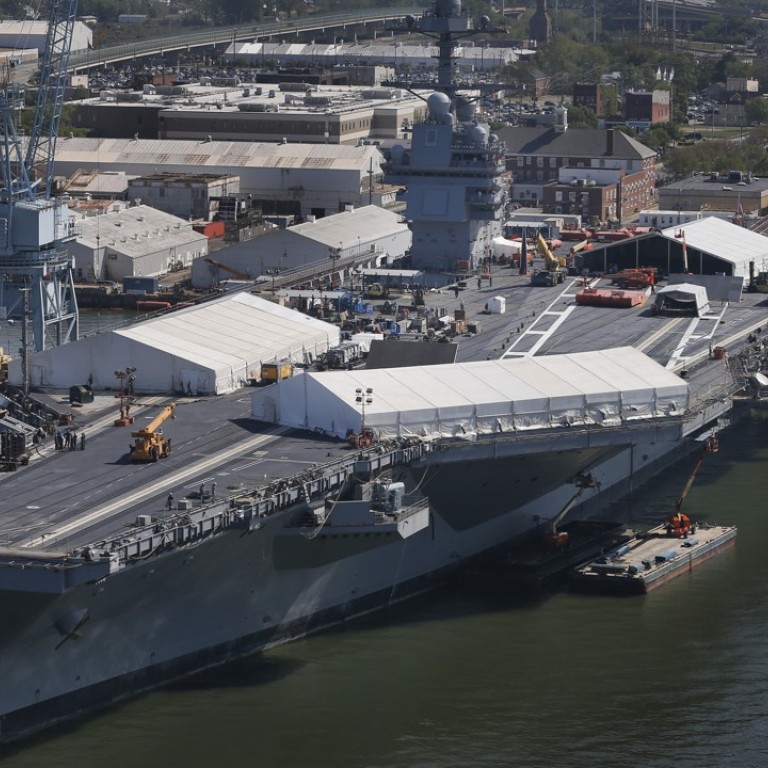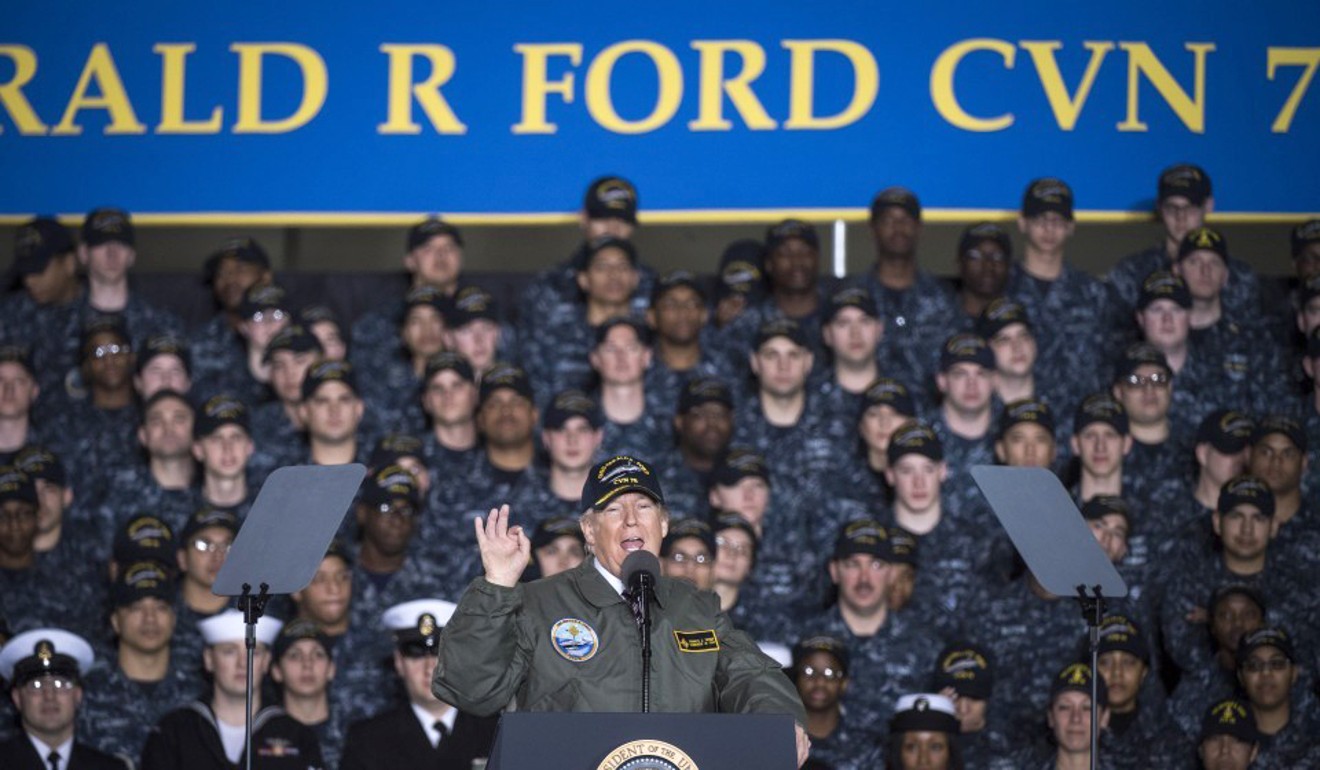
US Navy takes delivery of new US$12.9 billion aircraft carrier, target of Trump criticism
The first of a new class of aircraft carriers has been officially delivered to the US Navy after more than a year of delays, cost overruns and technological glitches that drew criticism from President Donald Trump.
The Navy said Thursday that the USS Gerald R. Ford will now go through various workups at sea before becoming operational in 2020. The Navy plans to build at least two more Ford-Class carriers, according to the Congressional Research Service.
The Navy says the technologically superior Ford can carry more planes and operate with several hundred fewer sailors. A new electromagnetic system for launching aircraft will help to increase flying missions by a third.
But the delivery of the new carrier by Newport News Shipbuilding in Virginia follows Trump’s complaints about the ship’s new catapult launch system, which uses previously untested technology.
The president told Time magazine last month that the Navy should go back to using steam catapults because the new system “costs hundreds of millions of dollars more money and it’s no good.”

Acting Navy Secretary Sean Stackley told the US Naval Institute News last month that “we have not briefed the president on the Ford program. He did go down to Newport News and visited the ship, was onboard the ship. And so I wasn’t present for that visit, I don’t know what his source of information was.”
The catapult initially failed during a demonstration in 2015, according to media reports. Testing also showed that the catapult put too much stress on planes carrying the extra weight of external fuel tanks, according to a Department of Defence report.
The Navy’s press release announcing the ship’s delivery stated that “any deficiencies identified during trials will be addressed” when the Ford is in port.

“Right now we’re in that period where the ship is no longer under construction,” he said. “This is where the ship begins on the path to becoming an operational unit.”
Much of the delays and cost overruns have been attributed to the Ford’s incorporation of several new systems at once.
They include the new catapult system as well as new technology for landing planes, which has also had problems.
Construction of the Ford was supposed to finish by September 2015. The US$12.9 billion ship was initially supposed to cost US$10.5 billion.
Christie Miller, a spokeswoman for shipyard-owner Huntington Ingalls Industries, said it’s already building the second Ford-class carrier, the John F. Kennedy. The shipyard has also received an advanced planning contract for a third carrier, the USS Enterprise.

